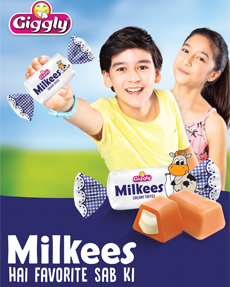
QR codes provide product information to smartphone users who scan them with a dedicated app. PHOTO: PATRICK PLEUL/DPA/ZUMA PRESS
If nutrition labels require a smartphone app to unlock, will consumers read them?
That is the debate dividing healthy-food advocates and some food manufacturers that intend to use so-called QR codes in part to comply with new federal label requirements.
The law, signed last week by President Barack Obama, obliges food companies to flag genetically modified ingredients with plain writing, an icon developed by regulators, or digitally readable symbols known as a QR code. The law lets companies make GMO disclosures using only QR codes and not words—something the food industry supported.
Short for quick-response code, the digital symbols provide product information to smartphone users who scan them with a dedicated app. That cumbersome process has drawn criticism from healthy food advocates who want ingredients derived from biotech crops flagged as explicitly as possible.
“It is my hope that food corporations reject high-tech gimmicks like QR codes,” said Gary Hirshberg, chairman of the Just Label It advocacy group and Stonyfield Farm, an organic yogurt maker.
The Organic Consumers Association has started an online effort opposing the labeling law and its allowance of QR codes to disclose GMO ingredients. Some 500,000 people have joined in less than a week, the association said.
In a poll of 1,011 U.S. adults released Wednesday from the University of Pennsylvania’s Annenberg Public Policy Center, 59% said they weren’t likely to use their phones or an in-store scanner to learn if a product contained GMOs. Forty percent said they were likely to do so, and 1% didn’t know. Of those surveyed, 81% approved of the push to disclose GMO ingredients on labels.
Food manufacturers and grocers say subterfuge isn’t their aim. “I think it’s a red herring,” Mark Baum, senior vice president of industry relations at the Food Marketing Institute, said of QR code critics.
The institute found in a study this year that only a fifth of shoppers use QR codes to learn about the nutritional value of items at their supermarkets. Mr. Baum believes that pool will grow as shoppers seek out more detailed information about the foods they consume.
While they aren’t widely used in the U.S., the black-and-white blocks of bits, squares and lines, have been common in Japan for nearly two decades. Denso Wave Inc., a Japanese auto-parts supply giant, invented the codes in 1994 to help manage its inventory.
The codes contain data both horizontally and vertically, packing in more information than a linear bar code. They also convey information to a scanning device more quickly than the black-and-white vertical bars common on grocery products, which first began to appear in stores on packs of chewing gum in 1974.
Denso holds the patent for the codes but made their specifications freely available for others to mimic. Companies started using the codes to reach consumers after QR readers began showing up on Japanese cellphones in the early 2000s.
Today, apps including QR Code Reader and Shazam help users unlock data embedded in a QR code. Users points their phone camera at the code, then click on it to call up information or follow a web link.
In a poll of 1,011 U.S. adults released Wednesday by the University of Pennsylvania’s Annenberg Public Policy Center, 59% said they weren’t likely to use their phones or an in-store scanner to learn if a product contained GMOs. Forty percent said they were likely to do so, and 1% didn’t know. Of those surveyed, 81% approved of the push to disclose GMO ingredients on labels.
Amtrak began using the codes as part of electronic tickets introduced in 2012, as have some airlines. The National Park Service in February started scanning QR codes on electronic tickets at six locations, including Acadia and Everglades national parks. About 5,000 passes had been purchased using the codes so far, the park service says.
Pharmaceutical manufacturers have also experimented with the codes on their packaging. The European Union’s European Medicines Agency issued guidelines for their use last year.
“The notion that you could put everything on a package is exhausted. The real estate is limited,” said Bruce Davis, chief executive of Digimarc Corp., an Oregon company that creates another kind of digital label.
But even people who carefully track the consumer retail industry are skeptical QR codes can find mass appeal.
Federal regulation or no, said Bill Bishop, co-founder of retail consultancy Brick Meets Click, “It’s not something consumers are going to use or worry about regularly.”
Write to Heather Haddon at heather.haddon@wsj.com
News Referance: WSJ




